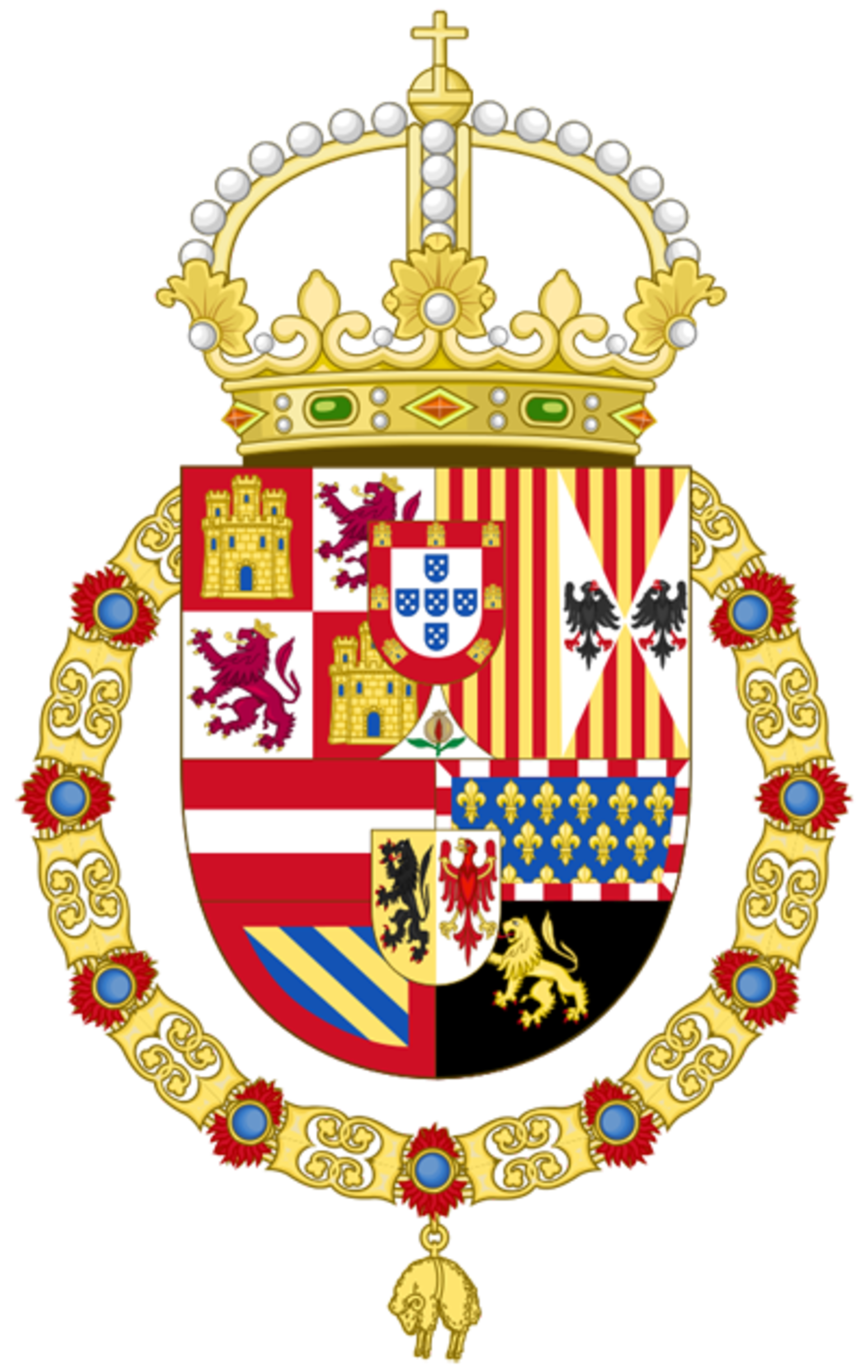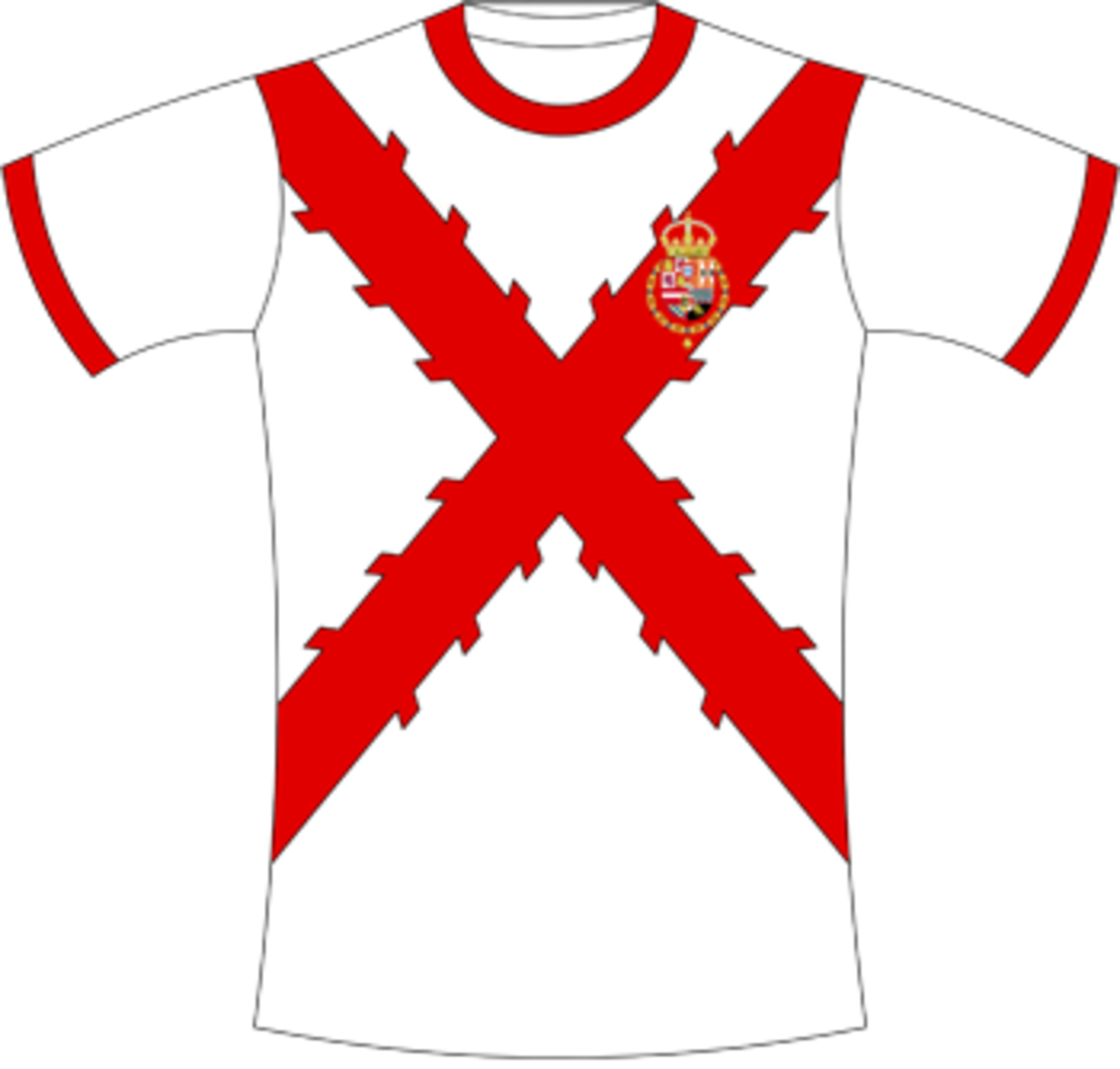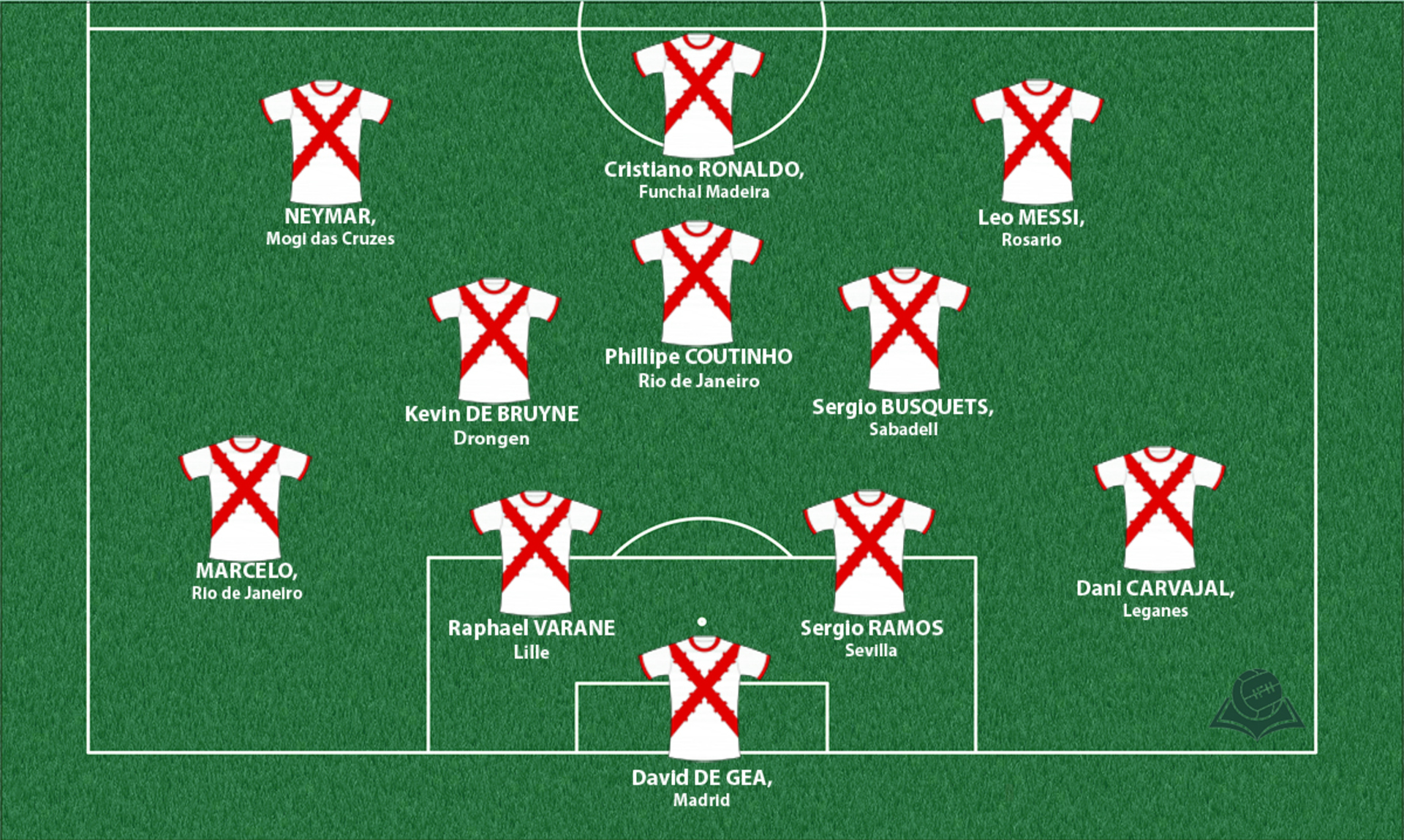The Spanish Empire
United Spain represented a dynastic conglomerate able to achieve political symbiosis and consensual action, although on the inside it was divided by various traditions and unbalanced regional interests. The whole peninsula was finally united under a single supreme rule when Castilian rulers sat the throne of Portugal in 1580, which also translated to their colonial properties.

Coat of arms

Shirt
| Position | First name | Last name | Mjesto rođenja | Like | Dislike | |
|---|---|---|---|---|---|---|
| GK | David | DE GEA | Madrid |
24 |
5 |
|
| GK | Gianluigi | DONNARUMMA | Castellammare di Stabia |
16 |
4 |
|
| GK | Keylor | NAVAS | Pérez Zeledón |
3 |
0 |
|
| DC | Gerard | PIQUE | Barcelona |
19 |
9 |
|
| DC | Marcos Aoás Corrêa | MARQUINHOS | Sao Paulo |
2 |
0 |
|
| DC | Raphaël | VARANE | Lille |
12 |
1 |
|
| DC | Thiago | SILVA | Rio de Janeiro |
6 |
0 |
|
| DRC | Sergio | RAMOS | Sevilla |
19 |
5 |
|
| DRL | Cesar | AZPILICUETA | Pamplona |
13 |
0 |
|
| DR | Daniel | CARVAJAL | Leganes |
16 |
4 |
|
| DR/MR | Hector | BELLERIN | Barcelona |
11 |
5 |
|
| DL | Jordi | ALBA | L'Hospitalet |
18 |
3 |
|
| DL | Vieira da Silva Júnior | MARCELO | Rio de Janeiro |
7 |
1 |
|
| DMC | Carlos Henrique | CASEMIRO | São José dos Campos |
6 |
0 |
|
| DMC | Sergio | BUSQUETS | Sabadell |
14 |
2 |
|
| MC | Andres | INIESTA | Fuentealbilla |
19 |
1 |
|
| MC | Arturo | VIDAL | Santiago de Chile |
1 |
0 |
|
| MC | Marco | VERATTI | Pescara |
7 |
0 |
|
| AMC | James | RODRIGUEZ | Cucuta |
1 |
0 |
|
| AMC | Phillipe | COUTINHO | Rio de Janeiro |
5 |
2 |
|
| AMRLC | David | SILVA | Arguineguín |
5 |
0 |
|
| AMRLC | Eden | HAZARD | Le Louviere |
20 |
1 |
|
| AMRLC | Francisco Román Alarcón Suárez | ISCO | Benalmádena |
12 |
0 |
|
| AMRLC | Kevin | DE BRUYNE | Drongen |
23 |
0 |
|
| AMRL | Raheem | STERLING | Kingston |
14 |
2 |
|
| SS/FRLC | Paulo | DYBALA | Laguna Larga |
4 |
0 |
|
| FRLC | Alexis | SANCHEZ | Tocopilla |
3 |
1 |
|
| FRLC | Cristiano | RONALDO | Funchal Madeira |
10 |
0 |
|
| FRLC | da Silva Santos | NEYMAR JR. | Mogi das Cruzes |
7 |
2 |
|
| FRLC | Gabriel | JESUS | Sao Paulo |
2 |
0 |
|
| FRLC | Lionel | MESSI | Rosario |
8 |
0 |
|
| FC | Romelu | LUKAKU | Antwerp |
12 |
4 |
|
| FC/SS | Sergio | AGUERO | Qilmes |
5 |
0 |
(Today part of: Spain, Portugal, parts of Belgium, Italy, Brasil, Argentina, Peru, Uruguay, Colombia, Bolovia, Carribien isles, Mexico)
When they discovered the New World (Central and South America), the Spanish conquered and decimated (through arms or diseases) the indigenous tribes, after which they established a system whose purpose was to fulfil the interests of exclusive elites, which was achieved through taxation. Vast amounts of gold that were confiscated strengthened the absolutism of Spanish kings, and made Spain into the greatest power at sea in the Mediterranean, as well the world’s oceans. When the Spanish King Charles V Habsburg (ruled 1519 – 1556) circumstantially inherited the title of Emperor, he came to rule over lands in Central and Western Europe, the New World, and by the end of his reign he would also rule Napoli, Sicily, and Milan with its natural appendage of Genoa, which was necessary in order to establish a quicker and safer connection between the Spanish and German worlds.
Such a vast Empire that Charles’ was could only exist under the assumption that a universal character of its mission is constantly emphasized, and this universality could only come from Rome. Consequently, Charles also engaged in bloody religious wars against Protestants, who refused to recognize the supreme authority of the pope. Castile was given a central position within the Kingdom of Spain. The Castilian system of governance was based on the aristocratic protection of the elites at the centre of power, as opposed to the ones in the provinces. In the regions that were far away from the centre of the state, such as Catalonia, Valencia, and Portugal, autonomous cultures were to be overpowered, as well as their local laws and parliaments. The Church was the main power that secured the cohesion of society. The foundation of countless places of pilgrimage, fraternities, and Church orders had a great influence on the Spanish national spirituality, as well as having a large social role. In a state full of provincial rivalries, the Catholic faith represented a symbol of unity.
Sources
- Niall FERGUSON, Civilizacija: Zapad i ostali, Zagreb, 2012.
- Grupa autora, Povijest: Počeci novog doba (16. stoljeće), knjiga IX., Zagreb 2008.
- Grupa autora, Povijest: Doba apsolutizma (17. stoljeće), knjiga X., Zagreb 2008.
- Giuliano PROCACCI, Povijest Talijana, Zagreb, 1996.
- Nikola Samardžić, Identitet Španije, Admiral Books, 2014.
- Bernard STULLI, Studije iz povijesti Dubrovnika, Zagreb, 2001.
- ''Karlo V. Habsburgovac'', http://www.enciklopedija.hr/Natuknica.aspx?ID=30563
